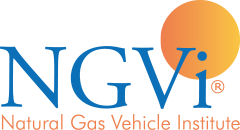
You may have considered some of the courses we offer for getting your technicians up to speed on the latest in heavy-duty NGV maintenance and diagnostics, or CNG fuel system inspection requirements, but you’re worried about holding on-site training.
 We understand your concern. The pandemic has forced all businesses, regardless of industry, to rethink their strategies on how to protect their staff.
We understand your concern. The pandemic has forced all businesses, regardless of industry, to rethink their strategies on how to protect their staff.
The good news? Live, in-house training is still possible to do safely, and will be highly profitable for your team.
Here are the protocols we follow to make learning about serving and inspecting CNG vehicles in the time of COVID actually work:
Spacing. Technicians will be reminded to keep 6 feet apart when entering the classroom, signing in, finding a seat, or taking breaks in common areas. Class desks and seats will be arranged at the same minimum distance.
Materials. The instructor will sanitize his hands before placing training materials and a complimentary sanitizer bottle at each seat.
Activities. During class, touching training aids passed around by the instructor will be optional. Participants can either view them from a distance or sanitize their hands before and after handling them. When performing outdoor hands-on vehicle activities, participants will be divided into groups of less than 10, and tools will be sanitized before each use.
Masks. These will be encouraged for use during indoor classroom instruction, as well as during outdoor on-vehicle activities and tool-handling. Instructors will wear masks except while presenting classroom instruction but will maintain maximum distance from participants during this time.
While these protocols sound good in theory, here are some photos representative of the in-person training sessions we’ve held recently with organizations like KeHe, Miami Dade Transit, Central Freight Lines and Flint Metropolitan Transit Authority.
We’re not discouraging online learning, which is certainly a viable alternative for companies that want to keep their training entirely virtual. But if you’re looking for a more hands-on experience, we want you to know that it’s still available, effective, and safe.
If you’d like to discuss how live training can work for your organization, you can simply click here to schedule a call.
